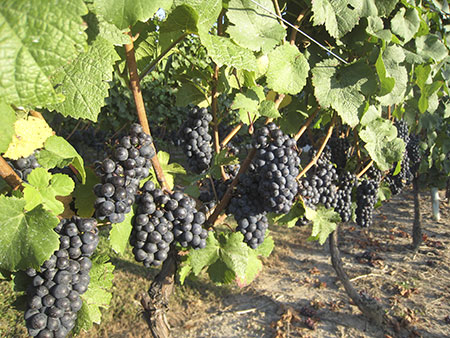About the French Paradox
Research points to the health benefits of antioxidants in red wine, while its ethanol content is the subject of medical research.
An investigation conducted by the French magazine Sciences et Avenir explores the truth about the benefits of wine on human health. A controversy had opposed the cultural tradition to the scientific field, and to the medical profession, all at a loss to determine a sensible boundary for what is acceptable consumption. Recent research is even debunking the so-called French Paradox.
Wine and Ethanol
The controversy started in 1998 after a government report classified alcohol as a harder drug than cocaine and heroin. Ten years later, the French Institut National du Cancer reignited the debate by stating that even one glass of alcohol can link to several types of cancer, a warning endorsed by the U.S. National Cancer Institute. But, in a country where viticulture is the second largest national production and wine an intrinsic part of life, this was a serious matter.
A measure of two glasses for a female consumer and three glasses for a male had been established as a sensible threshold by the World Cancer Research Fund (WCRF). It was later revised as a recommendation only, to prevent excessive consumption, and not as the endorsement that drinking less is better. The controversy was not so much about alcohol as it was about wine.
Because wine contains the ethanol molecule (CH3, CH2, OH), it was assessed as chemically identical to other alcohols. With statistics pointing to the alarming consequences of alcohol consumption in France, the fate of wine seemed to be sealed until studies showed a major difference between wine and other alcohols.
Red Wine and Antioxidants
Whereas alcohols contain the potentially intoxicating ethanol, research shows that only wine contains powerful antioxidants. Furthermore, all wines are not equal.
In comparing red to white and rosé winemaking, there is a fundamental divergence in the maceration process—only red wine benefits from the skin and seeds of the grape. As many other fruit and vegetables do, grapes contain antioxidants—the fighters of free radicals responsible for cell oxidation. More precisely, red wine contains two kinds of polyphenols—flavonoids and non-flavonoids—among which resveratrol, known for its anti-inflammatory properties. As a result, wine is distancing itself from other alcohols.
Not only did research by the Institut National de la Recherche Agronomique (INRA) led to the first database of polyphenol-containing products, but it established that although white and rosé wines contain some polyphenols, red wine contains ten times more.
The French Paradox
The term French Paradox was invented after a correlation was established between the traditional French diet—that includes the consumption of wine—and a lower mortality rate from heart diseases. At the time, the assumption was that alcohol inhibited the formation of fatty deposits in the arteries. Eventually, a report published in Nature claimed that the major factor is the vasodilatory action of a type of polyphenols: the procyanidines.
The concept fascinated Joseph Kanner, then a young scientist at UC Davis, California, who had just completed his research on antioxidants. In an interview with Sciences et Avenir, Kanner says that his research group believed that the antioxidants in wine must, somehow, be playing a role. They opted to focus on the earlier theory that the polyphenols in wine modified the LDL—low density lipoproteins, or the bad cholesterol.
To sum up the process, rich meals contain fats with cholesterol, necessary for healthy cells. Not soluble in blood, cholesterol is transported by the HDL—high density lipoproteins—to the liver whereas the LDL transport it from the liver to the cells. According to the report, 15 percent of the cholesterol comes from food, and 85 percent from other fats—the tryglicerides—produced by the liver. Too rich a diet generates oxidative substances, known as malondialdehydes (MDA), which enter the blood stream and either modify or oxidize the LDL. No longer recognized by the cells, the LDL stagnate as fatty deposits in the arteries.
However, in 2008, Kanner’s team made an important discovery. The polyphenols in wine inhibited the oxidation of the LDL.
A Potential Breakthrough for Heart Diseases
Research continued at the pharmaceutical department of the Ein Karem campus of Medical Science in Israel, where it showed extraordinary results.
When red meat was consumed with water, the oxidative MDA reached 160 of a unit-measure known as nanomole. Conversely, when red meat was consumed with red wine, the level decreased to 40 nanomoles. And, if meat had been marinated in red wine, the level of MDA was reduced to traces.
The scientists proved that the polyphenols in red wine prevent the oxidation and the absorption of the oxidative MDA when absorbed at the same time as fats. They now need to prove that the polyphenols modify the LDL.
The Future of Polyphenols on Human Health
Kanner’s team hopes to bring the benefits of polyphenols into diet consideration particularly since heart diseases can develop from the age of ten. Polyphenols are present in other foods than red wine. According to Sciences et Avenir, Kanner says that the perfect solution would be “a food supplement, without sugar or alcohol, consumed with meals, that and with high doses of polyphenols.”
Note: Since the publication of this article, read on: Is Alcohol Actually Good for Your Heart? Julie Corliss, February 19, 2018, Harvard Health Publishing
Sources
- La Vérité sur le Vin, Sylvie Riou-Milliot and Eléna Sender, Sciences et Avenir, Septembre 2010, 48-63
- National Cancer Institute 2013 Alcohol and Breast Cancer Risk: New Findings
- Nature.com 2006 Oenology: Red Wine Procyanidins and Vascular Health
- World Cancer Research Fund: Diet, Nutrition, Physical Activity and Cancer: Global Perspective
First published November 2010 Suite101.com
Editor’s Choice Award

